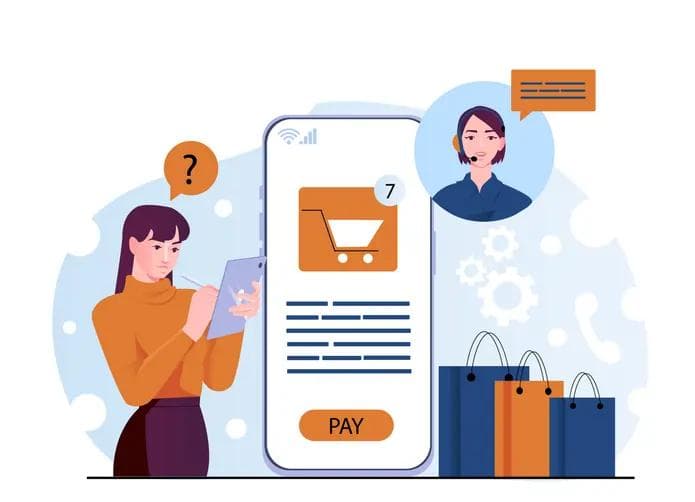Maintaining consumer loyalty by cracking the chargeback process
Maintaining consumer loyalty by cracking the chargeback process
Published by Gbaf News
Posted on April 25, 2019

Published by Gbaf News
Posted on April 25, 2019

By Neil Smith, Regional Head of Issuer Partnerships EMEA at Verifi

Neil Smith, Regional Head of Issuer Partnerships EMEA at Verifi
In today’s dynamic retail environment, building and sustaining consumer loyalty for issuers is a top priority.
Lose consumer loyalty and there are plenty of challenger banks for consumers to go to, should they be disappointed with their current bank. While many traditional banks understand the need to adapt to changing consumer preferences and create friction-free experiences, not all do this well to secure long-term success.
To make matters worse, with consumers progressively exploring the newfound freedom to shop where they want, when they want, and how they want, they’re increasingly discovering more paths to purchasing – creating opportunities for fraudsters to move in. This presents a huge challenge for issuers, as they seek to prevent fraudulent activity across multiple devices and channels.
Fraudulent activity within retail often comes in the form of chargebacks, which have mounted to a USD $31 billion problem* for the payments industry.
What are chargebacks?
Chargebacks are essentially the reversal of an outbound transfer of funds from a consumer’s debit or credit card. They occur for various reasons, such as quality issues with products, deliveries not turning up, or confusion over the charge on a bank statement.
Usually, a chargeback is initiated when a consumer calls their card-issuing bank, rather than the merchant, to dispute a transaction. In fact, consumers are increasingly leaving merchants out of the dispute process, initiating a fraud-related chargeback directly with issuing banks up to 76% of the time*.
Understanding consumers’ pain
When consumers are confused by their card statements or question card transactions, up to 66% of the time they blame the merchant for the problem*. In the majority of transaction disputes, consumers wish to deal directly with their card-issuing bank. However, eliminating merchants from the process means consumers are at a disadvantage dealing only with issuers, who lack the necessary transaction information to determine if the dispute is legitimate. Usually, an issuer will provide a temporary refund, which can serve to alleviate the concern over lost funds and improve consumer loyalty. Additionally, consumers will contact their bank a second time for reasons which are two-fold:
Issuers can be more effective through automating the dispute communication process, reducing the resolution time and creating efficiencies for their front line staff. Solution providers, like Verifi, can facilitate this communication method, leading to a smoother and more efficient process for consumers, merchants, and issuers.
Issuers also risk losing consumer loyalty, as they are admitting to processing a potentially fraudulent claim and only know about it due to the consumer’s declaration. In continuing with the inefficient dispute process, costs are only set to rise for merchants and issuers, which will ultimately be borne by consumers.
Although both merchants and issuers bear the risk of losing future business and damaging brand reputation following a dispute or chargeback, merchants see the bigger impact on their bottom line. Unfortunately for merchants, 63% of consumers decrease their patronage* when they have encountered a negative chargeback experience. This is significantly higher when compared with the decline in card usage experienced by issuers. 43% of consumers use their card less after a true fraud dispute and 39% for friendly fraud disputes*.
Some merchants resist arguing the chargeback and accept it as the cost of doing business, preferring instead to keep the consumer happy. On the other hand, forgive and forget might not always be best practice. Merchants generally bear significantly higher costs associated with the chargeback process. Fines, labour, lost goods, and refunds all combine to create inhibiting costs just to keep the consumer happy.
Collaboration is key to crack the chargeback process
To proactively reduce or even eliminate chargebacks, merchants need to rethink some of their existing processes. Merchants must remain vigilant against credit card fraud as part of best practices for consumer service to help ensure revenue protection and consumer retention. Additionally, innovations in the payment industry – such as solutions that facilitate better and more timely exchange of pertinent transaction or dispute data between the merchant and the issuer – can further reduce or resolve disputes more effectively, minimise the negative financial impacts of fraud and friendly fraud, and help retain more sales. Disputes only make their way to merchants a number of days after they have been raised by the consumer. Choosing a partner who can accelerate the dispute notification process can help merchants reduce their chargebacks, improve customer loyalty, and save lost sales.
Further still, changes that improve communication among merchants and issuers throughout the dispute process can help reduce chargebacks, freeing up funds and resources that can be better directed towards core business growth. Implementing steps, such as setting up clear billing descriptors and fostering better merchant-issuer collaboration, can improve consumer loyalty for merchant and issuer alike. Merchants can also implement a solution that facilitates real-time dispute notifications, to review and resolve disputes faster to reduce time, resources, and costs associated with the chargeback process.
It is in the interest of all parties along the payment chain – for issuers, acquirers, and merchants – to implement improved dispute practices. Consumers will remain loyal if they encounter a positive brand experience, and merchants and issuers can see improvements in their bottom line.
Explore more articles in the Business category











